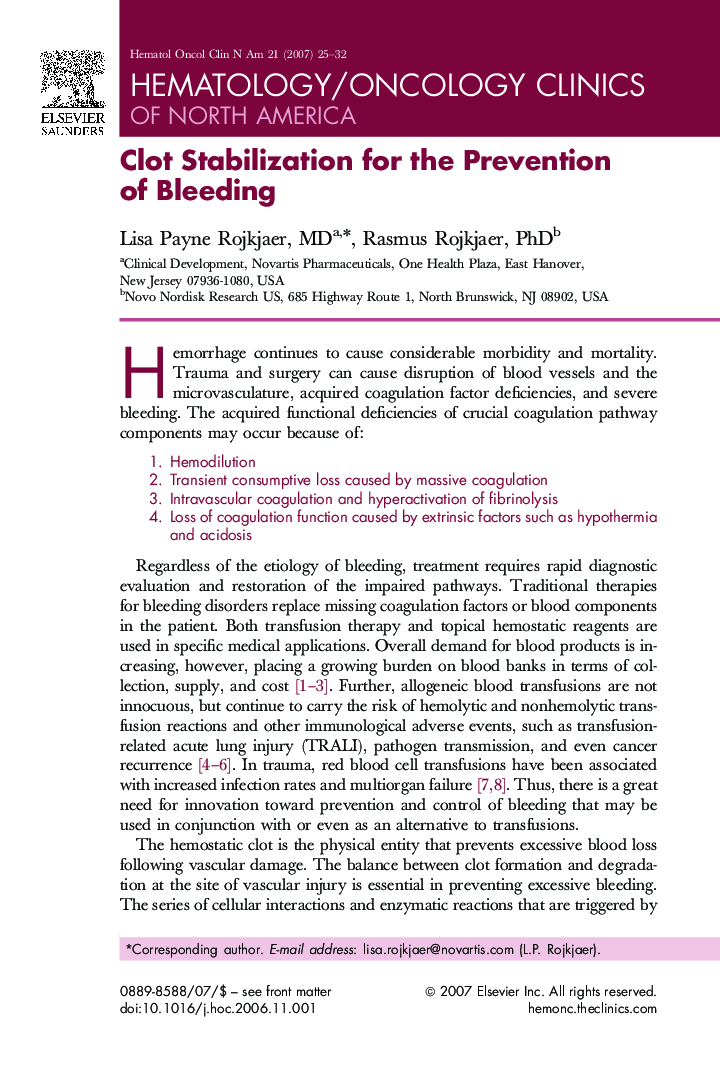| Article ID | Journal | Published Year | Pages | File Type |
|---|---|---|---|---|
| 3332158 | Hematology/Oncology Clinics of North America | 2007 | 8 Pages |
Coagulation is a finely tuned sequence of reactions beginning with the interaction between tissue factor (TF) and its substrate, factor VII (FVII), and resulting in the formation of a fibrin clot localized to the site of vascular endothelial disruption. While important for fibrin clot formation, thrombin also plays a role in stabilizing the clot against premature fibrinolysis by activating thrombin activatable fibrinolysis inhibitor (TAFI) and factor XIII (FXIII), the terminal enzyme in the coagulation cascade. Despite use of antifibrinolytic agents in various types of surgery to inhibit clot lysis. thereby limiting blood loss and patient exposure to allogeneic blood products, numerous patients still require transfusions for nonsurgical bleeding. This article describes new concepts of localized hemostasis, a potential role for clot stabilization, and inhibition of fibrinolysis for control of bleeding.
